Want to ensure that you have total control over who has access to your Google Ads account?
It’s vital that you have complete awareness over who has access to your ads account, that way you can ensure that your prospects are seeing the best ads that your business has to offer.
Benefits
- In the event that you have employees who you need to give access to your Google Ads account, this blog will show you how.
- If you have employees whose access to your Google Ads account you’re looking to revoke, we’ll also outline how you can do this.
Available Variations – User-Access
Within your Google Ads account, you will notice that you are able to set access levels. Outlined below are the different levels available to you:
- Email-only – This means that the user is unable to sign into the relevant account for Google Ads.
- This is the option you should use if you want to be able to share the reports you get from Google Ads with your co-workers that you don’t want to have direct access to your account.
- Read-only – This means that the user has the ability to log into the account, look over the dashboard, see what campaigns there are and also grant read-only permissions to other members of the team.
- A good option if you want to give someone access to your data without having the ability to make any alterations.
- Standard – This means that a user has the ability to carry out nearly all the actions that an Administrator is able to, however, they will be unable to go through and control levels of access.
- This is a viable option if you’re intending to have an worker going through the relevant ad account and be responsible for campaign management.
- Administrative – The highest level of user access available – it is vital that you only permit this level of access to those you completely trust.
If the owner of the Ads Manager account is an administrator, they may have the ability to downgrade different Administrators of the managed accounts while also being able to grant administrator levels of control to others.
Discover An Account Structure To Suit Your Requirements
It is important that you recognise that there is a difference between the following: a regular account with Google, a Google Ads account, and Google Ads Manager.
To help with this distinction, we have outlined what each of them are in further detail below:
- Google Account (Regular)
This type of account gives you the ability to use Google services by using one login.
- Google Ads Account
This type of account allows you to manage and construct campaigns using this network: Google’s Advertising.
- Google Ads Manager
This type of account is a Google Ads account which you are able to use to view and control more than one account (manager accounts also fall into this category) from one account.
Deciding Which Account Structure Is Right For You
- Does your business have control over more than one Google Ad account?
- No? Then you’re fine to use a Google Ads Account
- Are there third parties that you need to grant access to?
- No? Then you won’t need to implement any user management – in other words, you can stop reading here! You’re all done.
- Yes, your team does need access to the ad account? Then you’ll need to get a structure in place.
- Yes, you are managing more than one account? Then this means that you’re going to need to have a minimum of one Google Ads Manager account so that you are able to have management control over the other ad accounts.
- Are there third parties that you need to grant access to?
- No? Then you’re fine to use a Google Ads Account
-
-
- Do you need to limit any third-parties access to accounts?
- No? Then this means that all employees will be able to access any ad account – you will only need the one manager account to do this successfully then.
- Yes (I need to know how to control which accounts my workers can access) – then you’re going to be responsible for setting up a Google Ads ‘Overview’ Account and then proceed to group the Ad Accounts using the ‘Siloed’ format for the accounts.
- This will involve having an Overview Google Ads Manager which you can use to control multiple Google Ads accounts.
- Do you need to limit any third-parties access to accounts?
-
Setting up an account: Google Ads Manager
- You’ll need to start on the homepage for Google Ads Manager and select “Start Now”
- Make sure to click ‘Start Now’ not ‘Sign In’
- Input the relevant account details and information – i.e. currency, relevant time zone and location (it is vital that you keep in mind these aren’t factors you can change further down the line).
- Now input your email – keep in mind this email needs to be the address you’re planning to use already needs to have a Google Account in place.
- Tip – you are able to use one email for setting up 5 different ad accounts (as well as manager accounts)
- Give the account a name – keep in mind that this is something that your team or clients will be shown whenever you have requested access to other accounts.
- Make sure to hit “Save and continue” – this will then take you over to create your Ad Account that will be connected to the manager account you’ve set up.
Google Ads Account – Access Request From Ads Manager Account
This is usually a process that you will go through if you begin working with a client for the first time and so need to be able to access their account for Google Ads.
- Access Provided
- Multiple Options
- Who’s Responsible?
- The party who wants to access an external ad account.
- Details required?
- You’ll need to input the person whose account you’re intending to access – i.e. the account’s Business ID.
- In the event that you do not have these ID details, you will need to do the following:
- Make sure that you are logged into the relevant manager account for Google Ads
- Go over to the sidebar and select these in the following order:
- “Accounts”
- “+”
- “Link Existing Account”
- In the input box, you’re going to need to ensure you have put in the ID for the customer account that you’re intending to link to using this manager account for Google Accounts, ensuring you select “Send Request”
- In the event that you do not have access to this ID, you’re going to need to need to get in touch with the account owner to request it.
- If they need help finding it, they will need to be logged into their ad account, and check to the top right section of the dashboard to view the Customer ID.
- In the event that you do not have access to this ID, you’re going to need to need to get in touch with the account owner to request it.
- You have now successfully sent your request for access, this means that the account’s owner has 30 days to be able to grant you access before the request has expired.
- Once the account’s owner has confirmed the request, then this is something that you will be able to find on the “Accounts” section of your manager account.
How To Provide Access
- You will notice that you have received an email which is a request for access to the relevant account for Google Ads Manager.
- Once you have opened the relevant email, you’re going to need to hit the “Accept Request” button
- You will then notice a new notification which will tell you to grant someone account access.
- Make sure to click “View” and then “Accept” when you notice a pending request.
- Finally, make sure to click the “Grant Access” button
Google Ads Manager Granting Account Access To Third Parties So They Can Work On Managing Ad Accounts
This would apply to an organisation which is granting employee access to accounts which are available to access through the Manager account.
- Access Provided – select the ‘multiple’ option.
- You need to keep in mind that all accounts for Google Ads have been connected to the relevant manager account so it will be accessible to users at certain access levels.
- Whose responsible? The person who is intending to grant access to an account through the manager account.
- Details required?
- You will need to add in the relevant person’s email address.
- Make sure that you have accessed the relevant manager account for Google Ads.
- Go to the header and make sure to select “Tools” and then “Account Access”
- You then need to hit the “+” button and input the details of the person you’re intending to invite and then click “Send Invitation”
- Until it is accepted, the status of the request will be ‘pending’
- You will need to add in the relevant person’s email address.
How To Accept Access
- You will notice that you have received an email which is a prompt to accept account access.
- Once you have opened the email, you’re going to need to hit the “Accept Request” button
- Make sure to hit this button: “Continue” – this will then ensure you have access to the relevant Manager Account.
Providing 3rd Party Access To An Account
- You’re going to need to see if the third-party you’re going to give access to is a user of a manager account or a basic Google Account.
- If you find that the are a manager account user, then they will then to go through the first stage of this blog based around how they can request access to a Google Ads account using their manager account – you will also need to ask them for their Customer ID.
- If they are a user of a single Google Account, then proceed to step 2.
- Make sure that you have logged into your Google Ads Manager – go to the header and make sure to select “Tools” and then “Account Access”
- You’re going to need to hit the ‘+’ button and input the relevant details of the person you want to invite (this would usually be their email address) and now make sure to click “Send Invitation”.
- The request will be classed as pending until it has been accepted.
How To Accept The Invitation
- If you have been invited to access an account, you will notice you have received an email notification prompting you to join.
- You will need to open the email and make sure to hit the “Accept Request” button and then “Continue” which will ensure your email address has been confirmed.
- Your Google Account will now have access to that particular manager account.
Removing Account Access
This section of the blog applies to a Manager account as well as a single Google Ads account.
- Ensure that you are logged into the relevant Google Ads account – ensure that you have user-management access level.
- Go to the header and select “Tools” and then “Account Access” from the dropdown menu.
- You will need to select “users” and then remove the relevant individual (if you’re removing a manager, just select “managers” to remove the ability to access).
- To ensure you have removed access, make sure that you click “Remove Access” it will be in the Actions column.
- You’ll be prompted to click “Remove Access” again.
Disconnecting Ad Accounts
Throughout this section of the blog, we’ll show you how you can disconnect an ad account (both a single and manager account) from your own Google Ads Manager.
- To start off, make sure that you have logged into your Google Ads Manager.
- See the option of “Accounts” in the sidebar, make sure to select it and then the “Management” tab which opens up – this will then give you the opportunity to find and select the account(s) you’re planning to disconnect from.
- Now click “Edit” and then “Unlink” before finally selecting “Unlink” again when the notification appears.
- You will now notice that a notification has popped up on your device – it should say “account unlinked”.
Thanks for reading!
You have now successfully gone through the process of finding out how you can grant and revoke access to different types of Google Ads accounts.
If you found this blog useful (and we hope that you did!) make sure to check us out on social media so you can keep updated with our latest news and events.


